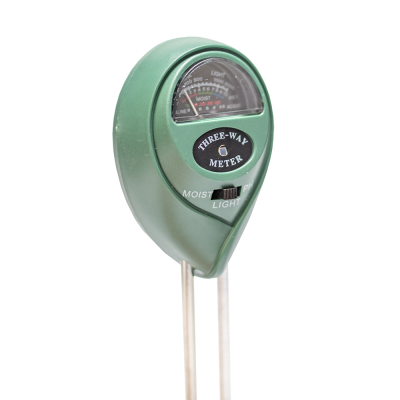- Creating a physical border to keep grass out of your garden beds is one of the best options
- Keep in mind your lawn type and incorporate some barriers in your garden and lawn design
- Regular maintenance – little often – is one of the best ways to stay on top of garden beds
 If the overgrown look isn’t for you, there are other ways to rid your gardens of your lawn. We’ll look at some options shortly but the first thing to do in most cases is to kill off any grass that has entered your garden beds. Depending on your lawn-type or invasive-garden-bed-species, this can be a simple or rather complex task. Just ask anyone who has got couch grass established in their garden areas and they’ll probably tell you about the blisters that go along with continually pulling it out. Totally eradicating grass from your garden beds and then keeping it out can be done, but it does take a methodical approach.
If the overgrown look isn’t for you, there are other ways to rid your gardens of your lawn. We’ll look at some options shortly but the first thing to do in most cases is to kill off any grass that has entered your garden beds. Depending on your lawn-type or invasive-garden-bed-species, this can be a simple or rather complex task. Just ask anyone who has got couch grass established in their garden areas and they’ll probably tell you about the blisters that go along with continually pulling it out. Totally eradicating grass from your garden beds and then keeping it out can be done, but it does take a methodical approach.
There are herbicides that only kill grasses, without harming other plants. But, be careful when using sprays when it comes to lawns, as most are warm-season turfgrasses which are susceptible to non-selective herbicides such as glyphosate/roundup. Try and remove as much vegetation as possible by hand by using a garden knife or hand-scythe to cut the grass low to ground-height. Now if it’s a cool season grass-type weed and doesn’t have any runners like rye grass, fescue or the like you can pull the grass, roots and all and it won’t grow back. Warm season grasses on the other hand, Couch, Kikuyu, Zoysias and Buffalos are all warm-season grasses and have a runner system and that’s why they tend to invade the garden in the first place. With Couch, Kikuyu and Zoysias they also have a rhizome system that grows underground and can tunnel under edging and pop-up and establish in neighbouring beds. Once you’ve removed most of the plant it’s time to address the underground part of the grass and there’s a couple of ways to go about it. Cutting off the light with a covering – mulch, cardboard or newspaper is one way and can smother the grass and then make sure you spray any new shoots that appear.
The other method is to use a non-selective herbicide like round-up / glyphosate being careful not to spray any garden plants you want to keep. Depending on the grass type and the amount, you may well need several spray applications – and trimming back in between before you can see the end of the weed. This time of the year is an ideal time to attempt removal as the growth has slowed from its peak, yet it hasn’t gone completely dormant in most areas so will still take up the herbicide through the leaf. Once under control it’s a matter of being vigilant with a spray bottle handy to quickly knock over any new invasions as they appear. Now keeping it from re-entering from your lawn is a different matter and that’s where you’ll need to decide on your approach. As discussed above, the grass type can make a big difference as how it moves into beds and is a determining factor in the barrier-type you’ll find best to use.
Establishing a border or edging, is one of the easiest ways to keep your lawn from creeping into your garden beds. Hard borders can be made from virtually anything, from store-bought long bands of plastic or metal edging that push part-way into the ground, through to rocks, old plates, and even wine bottles are not excluded. Bricks, pavers, concrete and treated timber tend to be the favoured options, but whatever material you use, try and make sure the barrier is sunk deep enough to help limit grass from growing underneath. Another physical border option is the spade edge, or “English border”. It is basically a shallow ditch dug between the lawn and flower bed. It’s quite easy to dig out and maintain, with weeds and grass runners easily spotted in the ditch and either trimmed or sprayed out. Another short-term option can include using a non-selective herbicide, which would need to be used with care as this would kill your lawn as well as any garden plants and would again leave a bare dirt patch between the two. The only trouble here is keeping it neat as the edge always has that chemical-burn-look about it and as a long-term solution can be a cause of herbicide-resistant weeds in the long run.
Your choice of edging will hinge on many factors including the use of garden design materials that suit your outdoor spaces and your budget. Getting your edging to something that makes a lawn-edger or whipper-snipper easier to use use probably the ultimate goal as when these chores are attended to along with mowing, the finish is is clean and neat and one that you can be proud of. Sticking with one of Lawn Solutions Australia’s proven varieties and using one Lawn Solutions Australia’s preferred herbicides may very well help keep your lawn looking outstanding and convince you to rid yourself of those pesky garden beds once and for all – lawn invasion problem solved!


